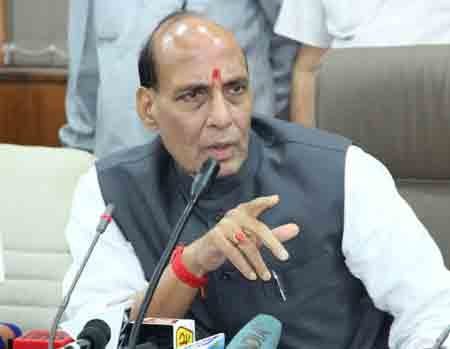INVC NEWS
New Delhi : The DAC’s decision to approve defense projects worth ₹2.23 lakh crore is a significant stride towards realizing the dream of a self-reliant India in the field of aerospace and defense. The Tejas LCA and Prachand combat helicopters are not merely military assets; they symbolize India’s growing technological sophistication and strategic autonomy. This move, quintessential to the vision of ‘Atmanirbhar Bharat’, is set to redefine India’s defense narrative, bolstering its position as a formidable aerospace power on the global stage.
India’s Defense Projects Bolstering Indigenous Aerospace: A Leap Towards ‘Atmanirbhar Bharat’
In a landmark move that promises to significantly strengthen India’s indigenous aerospace sector, the Defence Acquisition Council (DAC), chaired by Defence Minister Rajnath Singh, has approved defense projects worth ₹2.23 lakh crore. This strategic decision is set to address the shortfall of fighter squadrons in the Indian Air Force (IAF), marking a pivotal step towards achieving the vision of ‘Atmanirbhar Bharat’ or self-reliant India. Central to this initiative is the acquisition of 97 Tejas Light Combat Aircraft (LCA) and 156 Prachand combat helicopters, representing a substantial boost to the nation’s defense capabilities.
Tejas LCA: Spearheading India’s Aerospace Innovation
The Tejas LCA stands as a testament to India’s growing prowess in aerospace technology. Developed by Hindustan Aeronautics Limited (HAL), this light, multi-role fighter jet is a significant leap in India’s defense manufacturing. The Tejas, with its single-seat, single-jet engine design, is adept at performing various roles, showcasing versatility and technological advancement. Notably, it features a tailless compound delta wing, an innovation that enhances its maneuverability and performance.
The first Tejas LCA, also known as the LCA Mk-1, is scheduled for delivery in February 2024, with the remaining aircraft to be delivered by 2029. The deployment of the Tejas along border areas is highly anticipated, promising to bolster India’s defense readiness.
Advanced Features of Tejas LCA
The Tejas LCA is equipped with state-of-the-art technology, including a digital radar warning receiver, external self-protection jammer pod, advanced radar, and beyond-visual-range (BVR) missiles. These features ensure the jet’s superior combat capabilities and situational awareness. Maintenance has also been a key focus, with Tejas boasting enhanced serviceability. Remarkably, the fighter jet incorporates 65 to 70 percent indigenous equipment, underscoring India’s commitment to self-reliance in defense technology.
The HAL Tejas Deal: A Game Changer for IAF
The Ministry of Defence has inked a deal with HAL for the acquisition of 97 Tejas Mk-1A jets, valued at ₹48,000 crore. This deal represents a significant milestone in India’s defense sector, with the Tejas being a homegrown fourth-generation fighter capable of mid-air refueling. This capability adds a strategic dimension to the IAF, enhancing its operational flexibility and endurance.
Prachand Combat Helicopters: Enhancing Tactical Air Power
Developed by HAL, the Prachand combat helicopter is another feather in the cap of India’s indigenous defense manufacturing. This state-of-the-art light combat helicopter, equipped with twin engines and weighing 5.8 tons, is designed for high-altitude warfare. Capable of air-to-air and air-to-surface missile deployment, Prachand is set to be primarily deployed in challenging terrains like Siachen, Ladakh, and Arunachal Pradesh.
Strategic Implications of the Defence Projects
The approval of these defense projects marks a paradigm shift in India’s military strategy and manufacturing. By focusing on indigenous development, India is not only reducing dependence on foreign suppliers but also nurturing its domestic defense industry. This approach aligns seamlessly with the broader vision of ‘Atmanirbhar Bharat’, promoting self-sufficiency and national pride.
Economic and Employment Opportunities
The infusion of ₹2.23 lakh crore into defense projects is expected to create a ripple effect across various sectors of the economy. This initiative is projected to boost employment, foster technological innovation, and stimulate growth in ancillary industries. The defense sector’s expansion is anticipated to attract substantial investments, both domestic and foreign, further solidifying India’s position as a global defense manufacturing hub.












